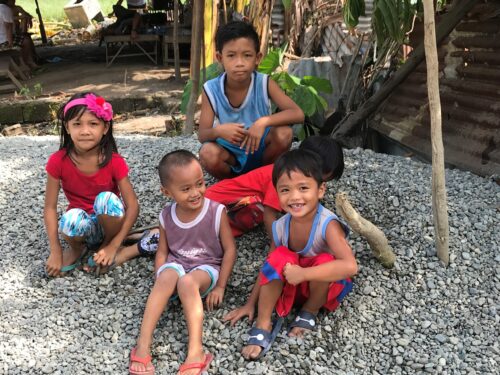Identifying Childhood Lead Poisoning in the Philippines

Larah Ibañez was preparing a report on childhood lead poisoning for the government of the Philippines earlier this year when she discovered that the country’s Expanded National Nutrition Survey (ENNS), conducted every three years, included the collection of blood samples.
“I knew immediately that we had to seize this tremendous opportunity to identify children poisoned by lead. They were already measuring a wide range of nutritional status parameters; why not add lead to the list?” recalled Ibañez, the Philippines Country Director for international NGO Pure Earth. She and her team approached the government agency in charge of the survey and proposed a collaboration to incorporate blood lead testing into the survey. They agreed. “They could see that it was a simple way to jumpstart a national program,” she said.
Pure Earth’s work in the Philippines is part of the Toxic Site Identification Program that helps communities locate, assess, and document sites contaminated with toxic chemicals so decision-makers can prioritize certain sites or sectors for intervention.
Thanks to USAID and Pure Earth’s collaboration with the Philippine government, the Philippines will conduct the first-ever national survey of childhood lead poisoning through the ENNS in September. This is a big step forward to address the lead exposure crisis affecting half the country’s children.
The Institute of Health Metrics and Evaluation estimates that about half of the 40 million children in the Philippines have blood lead levels (BLLs) above 5 microgram per deciliter, the standard for intervention set by the United States Center for Disease Control (CDC). Various local BLL studies in children from 1995 to 2017 showed a range of 5.39 to 67.6 ug/dL. However, until now, there has been no systematic effort to collect and analyze blood lead data from across the country to understand the true scope of lead poisoning.
With the global lead poisoning crisis affecting 1 in 3 children, or around 800 million children around the world, this innovative model has the potential to make a big impact on children’s health.
“Many countries already have agencies in place that have the mandate, staff, and operational structures to do nationwide health assessments. By tapping into what is already there, and bringing in partners from the public and private sectors for support, we are helping governments take the first critical step in addressing the global lead poisoning crisis currently sweeping low and middle-income countries,” said Pure Earth CEO Richard Fuller.
In the Philippines, Pure Earth is working with USAID through the Reducing the Threat of Toxic Chemical Pollution program. The grantee also works with the Philippine Department of Science and Technology’s Food and Nutrition Research Institute (DOST FNRI); Meridian Bioscience, the U.S. manufacturer of Lead Care blood lead testing systems; and Clarios Foundation, the leadership funder of Protecting Every Child’s Potential (PECP).
The Philippines survey will test up to 3,200 children ages six through nine, and up to 320 pregnant women in 13 areas across the country, including the cities of Muntinlupa, Navotas, Pasay, Pasig, and Valenzuela in Metro Manila; provinces of Bataan, Batangas, Cavite, and Tarlac in Luzon; Bacolod City and Bohol province in Visayas; and General Santos City and Surigao del Norte province in Mindanao.
Based on the results of the survey, Pure Earth intends to work with the National Poison Management and Control Center (NPMCC) to design a system to monitor blood lead levels at specific childhood developmental milestones. This will enable early detection of lead exposure and early intervention, which will reduce significant adverse health effects. The aim is for NPMCC’s regional sites across the country to be able to provide treatment and follow-up assessments for patients.
The Philippines is now the third country to launch a national childhood lead monitoring program that uses the country’s existing health survey infrastructure to collect lead exposure data. Pure Earth successfully facilitated similar efforts in Mexico and the Republic of Georgia, helping those governments understand the true scope and source of childhood lead poisoning, and setting a course of action to solve the problem.
This model holds promise for reducing mass lead poisoning of children in low and middle-income countries. The return on this modest investment can be enormous: improved health, increased productivity, higher IQs, less violence, and brighter futures for millions of children.

